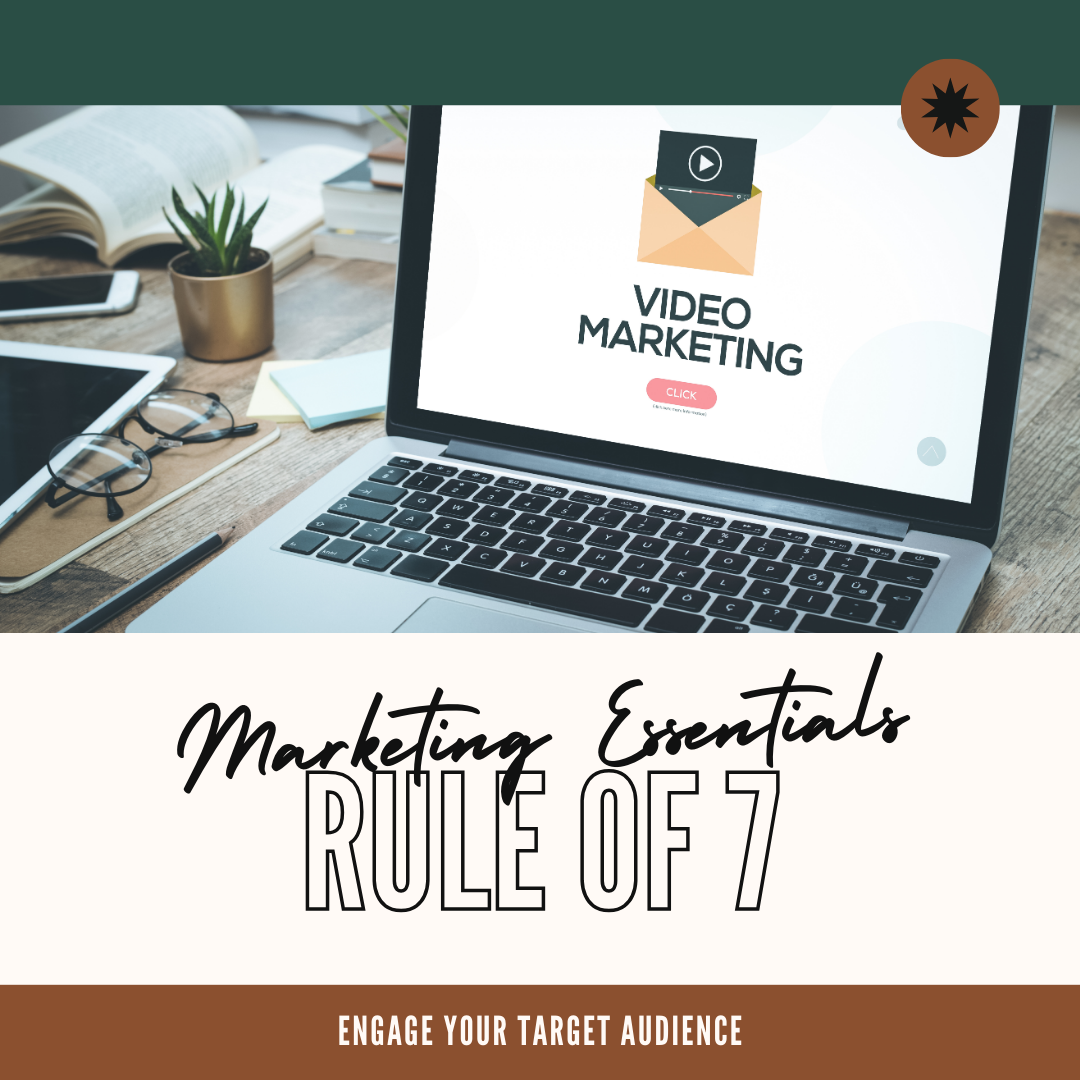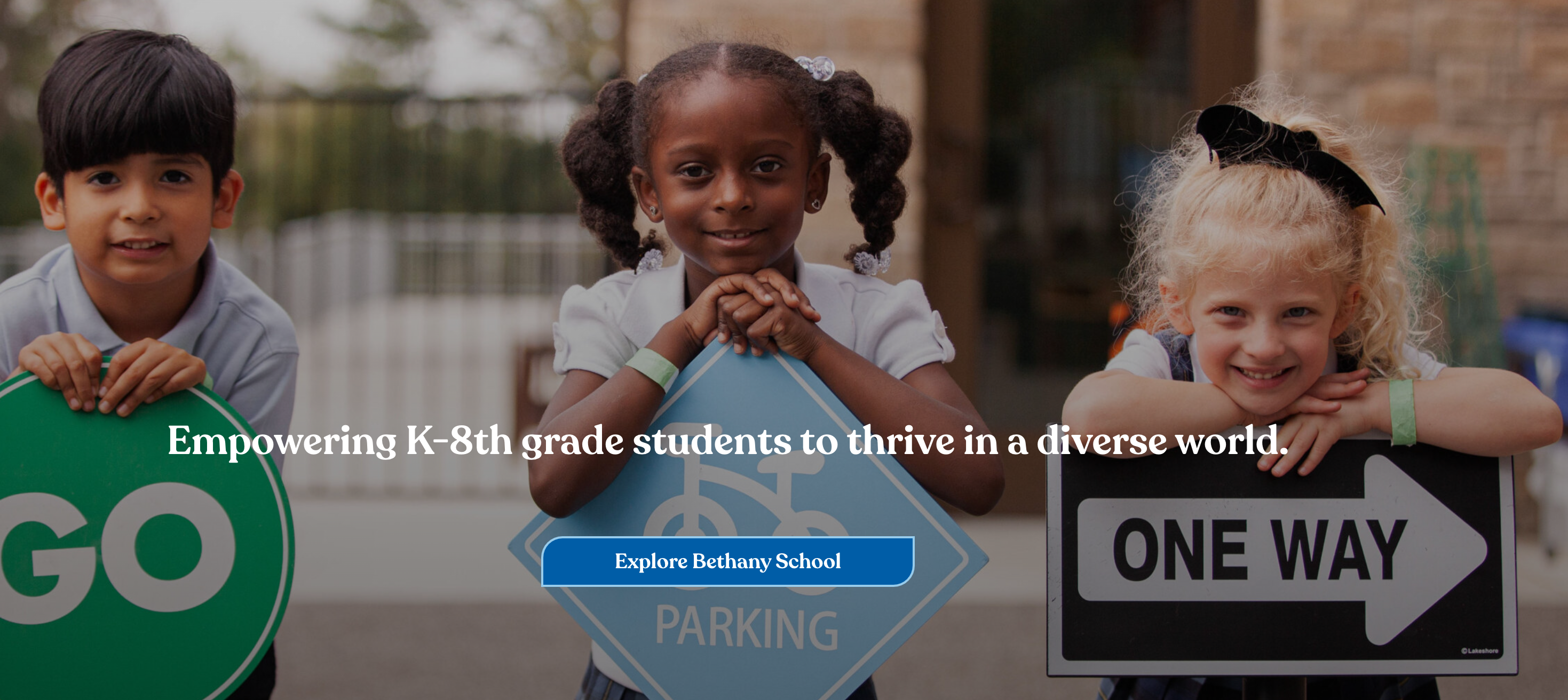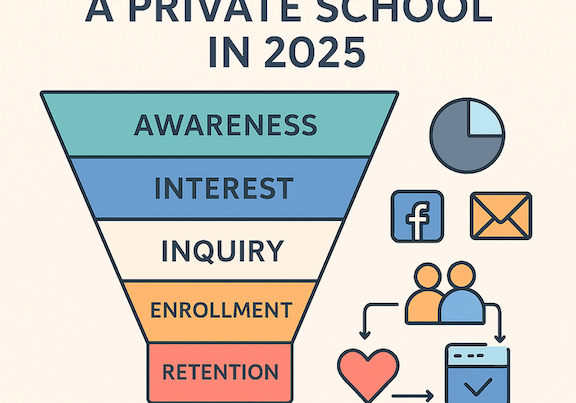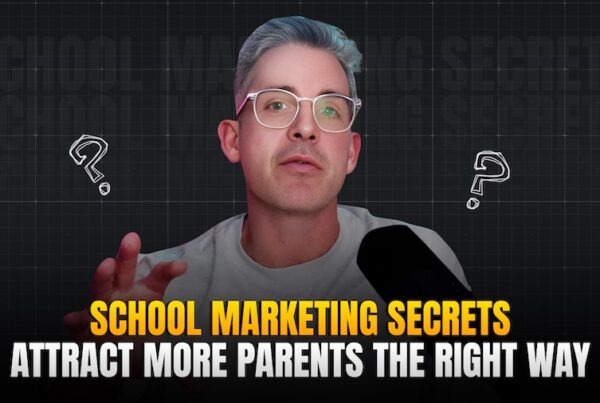Imagine you need a lawyer—maybe not for something dramatic, but let’s say it’s a big decision, like setting up a business or handling a tricky contract. You’re scrolling through options, slightly overwhelmed. A friend recommends a local attorney, then you spot an ad from them on social media, and later, you find their blog explaining common legal pitfalls. Each encounter makes their name a bit more memorable. This is the Marketing Rule of 7 at work, where trust isn’t built in a single moment but through a series of consistent, helpful touch points.
Now, consider that people encounter between 6,000 and 10,000 ads every day, according to KidGlov. For a law firm, a private school, or a roofing company to stand out, cutting through this noise with well-timed, valuable connections is essential.
The Problem: Recognition and Trust Are Hard to Earn
Think of The Marketing Rule of 7 like making a friend. A single meeting rarely creates a strong bond. Trust develops through multiple, meaningful interactions. For businesses, especially those with high-stakes services like law firms or medical practices, customers often hesitate to make decisions after just one touchpoint. They need to know that the brand is not only knowledgeable but reliable and consistent.
Imagine you’re considering a new doctor. You may hear about them from a friend, see an ad, then read a blog on their website about preventative care. These layered interactions gradually build familiarity and comfort. It’s the same for lawyers, roofers, or schools—fields where decisions impact a person’s well-being or financial future. In these cases, people need assurance that they’re in good hands, and that only happens when a brand feels both credible and approachable.
The Marketing Rule of 7 offers a practical roadmap for nurturing this trust. Rather than expecting people to immediately reach out after a single interaction, this approach provides a gentle nudge—a way for potential customers to build a mental “yes” list. Each encounter should add value, whether it’s through educational content, testimonials, or insights that address common concerns.
The Solution: Applying the Rule of 7 to Build Connections That Last
But let’s be clear: The Marketing Rule of 7 isn’t a green light to flood people’s feeds with ads or send an endless stream of emails. It’s about creating a series of intentional, well-spaced interactions that gradually build familiarity and trust. Think of it as a conversation over time, where each touchpoint serves a purpose and adds value, rather than overwhelming customers with repetitive messages.
One of the most common pitfalls in applying this rule is overwhelming the audience with content that’s too frequent or feels forced. Picture this: you meet someone who keeps bringing up their accomplishments every time you chat. Eventually, the charm wears off, and it feels like overkill. Brands can accidentally do the same if they push out too much without considering how each interaction can guide potential customers through the decision-making process naturally.
The goal is to make every interaction count by connecting in ways that matter. For instance, a prospective client’s journey could start with an ad that introduces your brand, followed by a helpful blog post or guide that answers a question they may have, and perhaps a testimonial video showcasing how others like them have benefited from your service. Each of these touch points should feel like a step forward, creating a natural flow that builds confidence without overwhelming them.
Channel-Specific Strategies for The Marketing Rule of 7
Each channel you use has its own strengths for building a memorable brand. Here’s how to make the most of each one with examples in the law industry.
Social Media
Social media is ideal for regular, bite-sized updates—think of it as a friendly wave or a quick chat each time customers scroll through.
- Instagram Stories: Share insights, legal tips, or behind-the-scenes updates.
- Facebook and LinkedIn: Dive deeper with client stories or firm news.
- Reels and Short Videos: Great for quick tutorials, success stories, or “myth-busting” videos about common legal misconceptions. Visuals are key; ThirtySevenWest reports that 90% of people say visuals influence their brand perception.
For a quick guide on creating a social strategy, check out Quick Guide: A Winning Social Media Strategy for Schools.
Email Marketing
Email keeps things personal. Think of it like a check-in text with helpful updates.
- Newsletters: Keep clients informed on new services or firm news.
- Personalized Emails: Tailor content based on client interests, like sharing tips relevant to their legal needs.
- Exclusive Offers: Offer early consultations or special rates for loyal clients.
Want to scale these strategies? Take a look at Outsourced Marketing Services: The Key to Scaling Your Business.
Blogs and Content Marketing
Blogs are like mini-workshops where you share your expertise, giving readers valuable information for free (and positioning yourself as a pro).
- Guides and How-To Articles: Address common questions, like “How to Choose the Right Lawyer.”
- Client Stories and Case Studies: Show how real clients benefited from your services.
- SEO-Optimized Content: Keywords can help readers find you organically, so each blog post can become a passive touchpoint.
Every post builds your credibility. Schools, for example, can use strategies like those in Stand Out Online with School Website Templates to attract prospective families.
Retargeting Ads
Retargeting ads give your brand a gentle nudge, keeping it in the minds of those who’ve shown interest.
- Dynamic Ads: Display relevant services based on what visitors viewed on your site.
- Sequential Ads: Tell a story across ads, from legal info to client testimonials.
- Cross-Platform Retargeting: Stay visible on Google, Facebook, and more.
This approach ensures you’re top of mind during decision-making.
In-Person and Virtual Events
Events allow people to experience your brand in a real, engaging way. Think of it as “getting to know you” time.
- Free Consultations or Webinars: Show your expertise and answer questions live.
- Workshops or Q&As: Offer sessions where clients can ask questions directly.
- Community Events: Meet prospective clients face-to-face by participating in local events.
Putting It All Together
Each channel contributes to a strategy that keeps your brand in the spotlight. The Marketing Rule of 7 is about building a relationship with your audience so that, when they need you, they’ll think of you first.
Real-World Case Studies: Applying the Marketing Rule of 7
 Case Study 1: Law Firm Builds Trust with Multi-Channel Marketing
Case Study 1: Law Firm Builds Trust with Multi-Channel Marketing
A law firm in Philadelphia wanted to stand out in the crowded legal market. Legal services are often high-stakes, so building trust was essential. Here’s how they tackled it:
- Social Media Presence: The firm shared case outcomes and legal insights on Facebook and LinkedIn, using local hashtags like #PhillyLaw. Visuals like client testimonials and case results helped engage the audience, with 90% of people saying visuals influence their brand perception, according to ThirtySevenWest.
- Google Local Services Ads (LSAs): LSAs positioned them at the top of local search results, capturing high-intent leads. Google’s data shows that 76% of people who search locally visit a business within a day.
- Organic and Local SEO: The firm optimized its website for “personal injury lawyer in Philadelphia” and regularly updated their Google Business Profile. This approach is crucial, as KidGlov reports that 80% of local searches convert to consultations.
- Google Ads for Broader Reach: Using terms like “Philadelphia attorney,” they targeted people early in their search. PPC ads can increase brand awareness by up to 80%, helping draw in a steady stream of new leads.
This multi-channel approach led to more inquiries and recognition, making them a trusted choice in their area.
Case Study 2: Independent School Boosts Enrollment with Digital Marketing
An independent K-12 school in Cincinnati wanted to connect with local families seeking a personalized education.
- Google Ads: Targeting terms like “private school near me” and “best school in Cincinnati” placed them at the top of local searches, driving website traffic and boosting brand awareness.
- Social Media Ads: Facebook and Instagram ads targeted local parents, highlighting unique programs and sharing testimonials. With 70% of families researching schools online, social media is essential for reaching prospective families.
- Organic and Local SEO: By optimizing keywords like “Cincinnati private school” and maintaining their Google Business Profile, the school improved local rankings, driving more inquiries.
Together, these channels increased interest by doubling the number of website visitors in 2 months. As a result, enrollments were boosted by establishing a reliable presence.
Measuring the Success of Your Rule of 7 Strategy
Tracking brand recall, engagement, and conversions shows if your Rule of 7 strategy is working. Not every customer needs exactly seven touch points; check your data to fine-tune the approach based on what resonates most.
Future Trends in The Marketing Rule of 7
With evolving technology, here are new ways to create those seven touch points:
- Personalized AI Recommendations: AI can tailor interactions based on user behavior. Today, 80% of customers expect a personalized experience.
- Interactive Experiences: VR and AR let users experience your brand firsthand. Studies show that 71% of consumers are more likely to buy from brands offering AR.
- Influencer Partnerships: Influencers can yield up to an 11x higher ROI than traditional ads. Micro-influencers, who often have smaller, engaged audiences, see engagement rates up to 60% higher.
- Voice Search and Smart Devices: With 72% of consumers using voice search weekly, optimizing for voice search is essential to visibility.
- Consistent Cross-Channel Messaging: Consistent messages across channels can increase revenue by up to 23%, keeping you top-of-mind.
Conclusion: Building a Recognizable and Trustworthy Brand
The Marketing Rule of 7 is about creating a series of touch points that keep your brand memorable. With well-placed, consistent interactions, you’re not just another choice—you’re the choice. In a world where everyone’s competing for attention, building relationships through trust and familiarity will set your brand apart.



 Case Study 1: Law Firm Builds Trust with Multi-Channel Marketing
Case Study 1: Law Firm Builds Trust with Multi-Channel Marketing



